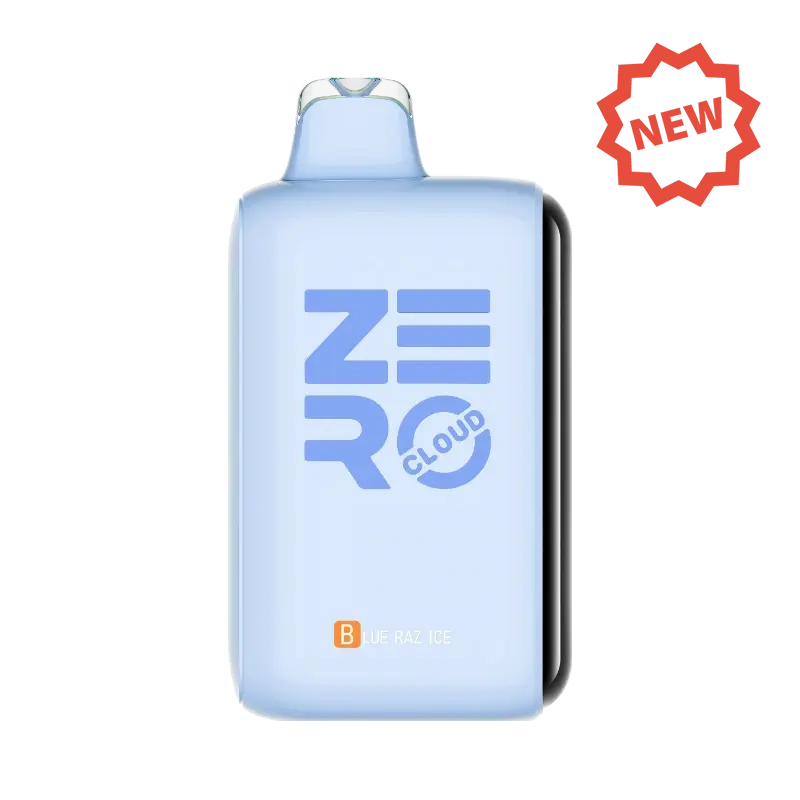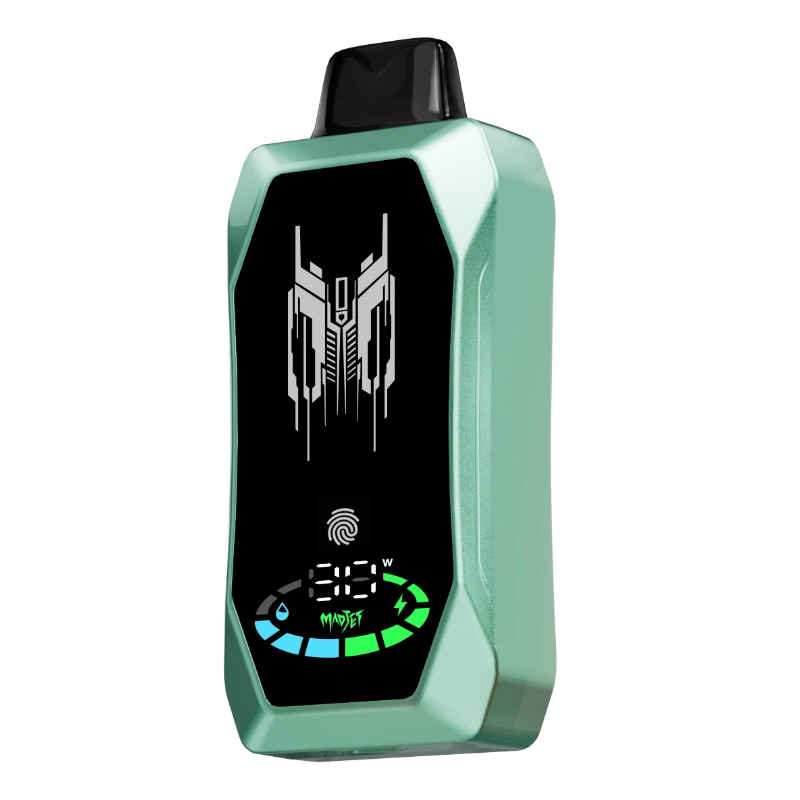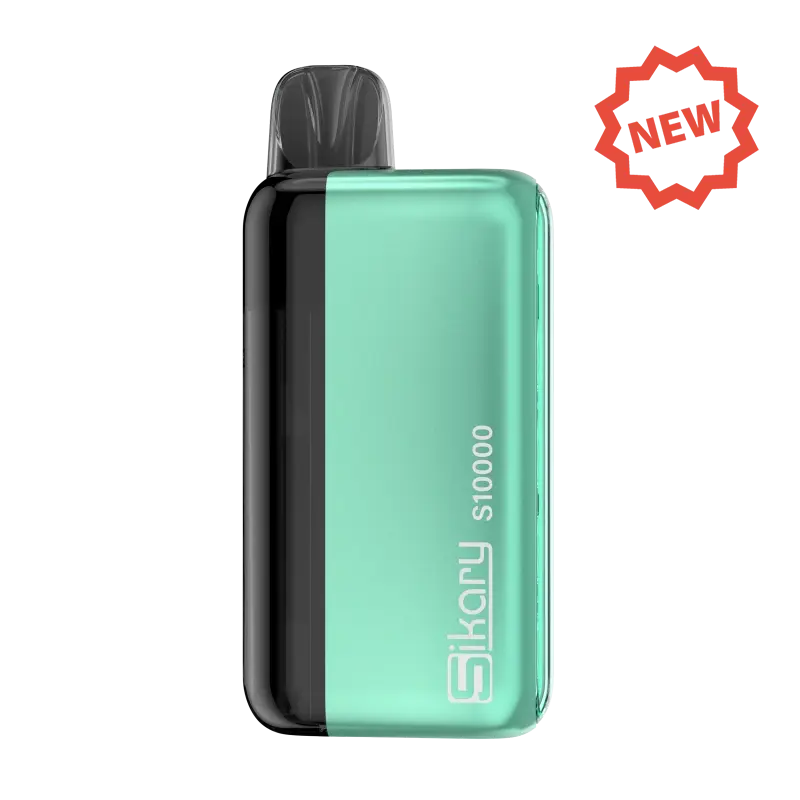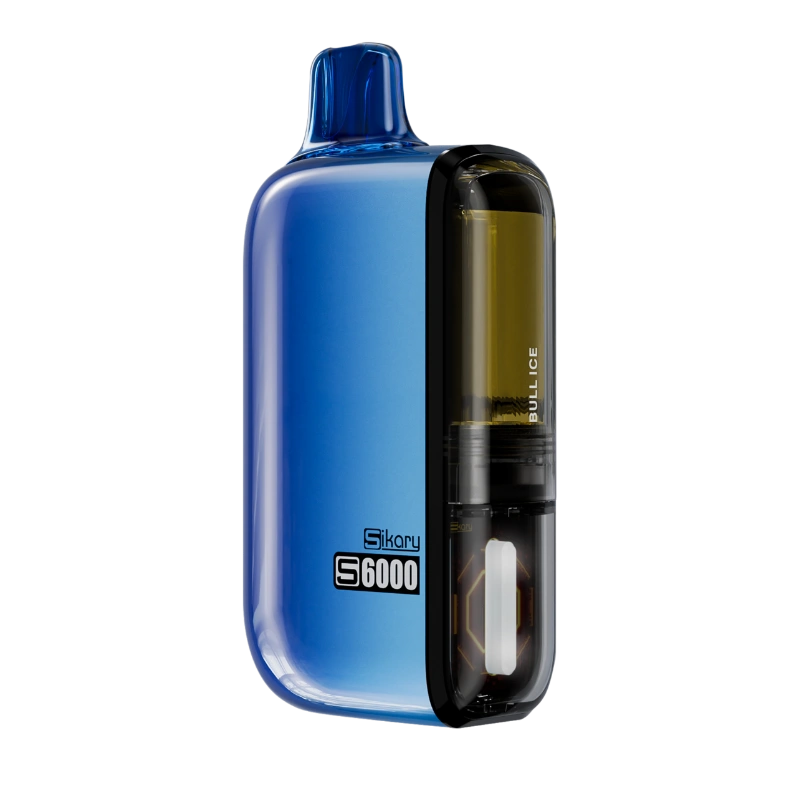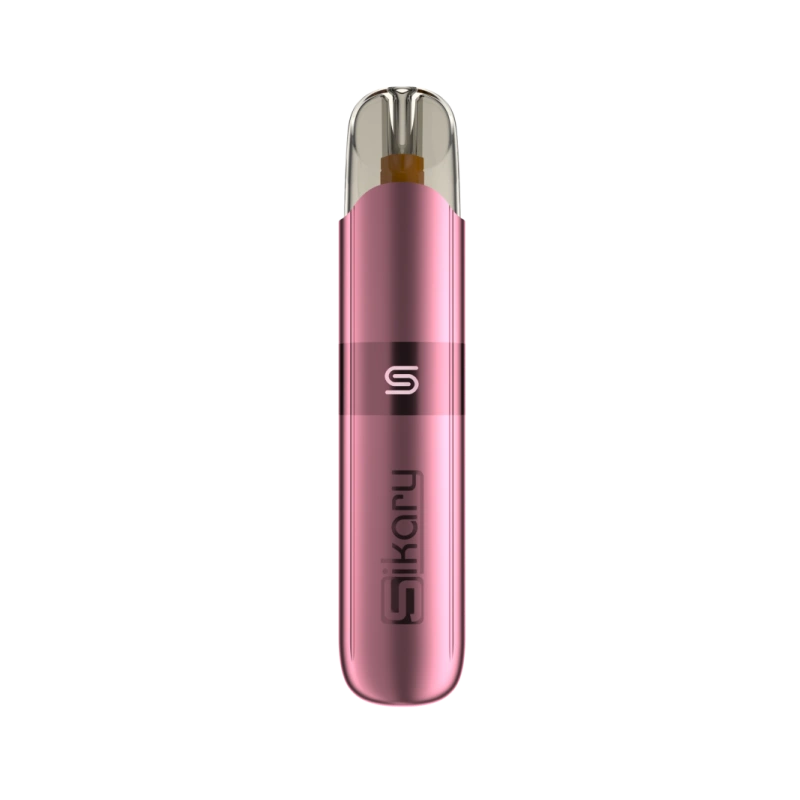Accidents happen, and dropping your vape in water is something a lot of users have experienced. If your vape gets damaged by water, whether it slips into the sink, lands in a puddle or takes a plunge in a swimming pool, knowing how to handle it can save you from unnecessary frustration—or potential danger. It's important to understand the risks, recovery options, and when to replace your device to make sure vaping is safe and effective.
Water can do a lot of damage to a vape's delicate electronic components. From short circuits to battery failure, even a short dip can cause a lot of damage. But is all hope lost if your vape gets wet? Not necessarily. If you act quickly and take good care of it, you might be able to save your device.
In this blog, we'll look at what happens when your vape is dropped in water, the steps you should take straight away, and the risks of using a vape that's been damaged by water. Whatever kind of device you're dealing with, we'll give you the lowdown on how to do it safely.
One really important part of looking after your vape is making sure it doesn't get damaged by water. If you drop your vape in water, you could end up with some pretty bad problems, like short circuits or rusty insides. These issues can damage your device and even pose safety risks, like electric shocks or potential fires.
If you know how to react quickly when your vape gets wet, you can avoid a lot of damage. If you can get back to us quickly with the right info, you can avoid a lot of hassle and save yourself a lot of money. This guide looks at what happens when you drop a vape in water, gives you steps to deal with any issues straight away, and gives you tips for how to look after your vape to keep it safe and make sure you have a good experience.

Why Vape Care Matters:
- If you handle it properly, you can make it last longer.
- It makes sure you have a steady and enjoyable vaping experience every time.
- Minimizes risks associated with device malfunctions.
What Happens When You Drop a Vape in Water?
It's really important to understand how water exposure affects your vape right away. If you drop your vape in water, there are a few things that could happen straight away. The most common is that it just stops working. So, here's the lowdown:
1. Short Circuits
Water conducts electricity, so if your vape gets wet, there's a good chance it'll create a short circuit. This can disrupt the electronic components within the device. Short circuits can cause the vape to malfunction straight away, and if you don't fix them straight away they can even make the vape unusable.
2. Corrosion Risks
If you keep your vape in a wet place, the insides can get rusty. This can often affect the battery terminal and other metal parts, which can compromise the functionality and safety of your device. Corrosion is a sneaky problem because you can't always see it right away, and it might not show up until something's already broken.The potential for permanent damage is a reality if these issues are not handled promptly. Quick action is essential to mitigate these risks:
- Act Fast: The longer a device remains submerged or exposed to moisture, the more likely it is to suffer irreversible harm. Swift removal from water significantly reduces this risk.
- Disassemble and Dry: Disassembling the vape allows for thorough drying of each component, minimizing further corrosion or malfunction.
If you don't deal with water exposure properly, it can cause irreparable damage, meaning you'll have to replace the item instead of just repairing it. If you recognise these immediate threats and act quickly, you'll be more likely to salvage your vape after accidentally dropping it in water.
It's really important to understand these risks, and to be prepared and know how to respond effectively. If you take quick action, you can help keep your device in good condition and make sure you vape safely in future.
Types of Vapes and Their Vulnerability to Water Damage
Knowing the differences between disposable and reusable vapes can help you spot where they're more at risk of water damage. These devices are all meant to do the same thing, but they're actually very different in how they're made and what they're made of. This affects how they react when they get wet by accident.
Design and Materials
Typically designed for single use, disposable vapes are constructed with simplicity in mind. They often feature a compact build with fewer components, which might seem advantageous at first glance.
Vulnerability
The simplicity of disposable vapes can be a double-edged sword. On one hand, their lack of complex circuits means fewer points of failure. On the other hand, the basic materials used may not withstand moisture well. Once wet, these devices offer limited options for disassembly or repair.
Reusable Vapes
Design and Materials
Reusable vapes are crafted for long-term use, incorporating more robust materials and sophisticated electronics. These devices often come with replaceable parts like coils, pods, or tanks.
Vulnerability
The complexity in reusable vapes introduces more potential failure points when exposed to water. However, this complexity also allows for greater control over repairs and maintenance. Components can be disassembled, dried individually, and replaced if necessary.
Comparative Analysis
- Repair Options: While reusable vapes often allow for partial salvaging through component replacement or drying techniques, disposable vapes are likely beyond repair once they've encountered significant water damage.
- Durability: Generally speaking, reusable vapes provide a higher degree of durability against water exposure due to their construction quality. Yet, caution is always advised as even these sturdy devices are not immune to the risks posed by moisture intrusion.
Recognizing these differences enables better decision-making when choosing a vaping device that suits your lifestyle and understanding the necessary precautions to protect it from water exposure.
Immediate Actions After Dropping a Vape in Water
When your vape accidentally falls into water, it's important to act quickly to minimize potential damage. Knowing the right steps to take in this emergency situation can make a big difference in whether you can save your device or if it will be permanently damaged.
Step 1: Remove the Vape from Water
The first thing you need to do when your vape falls into water is to quickly take it out. Whether it's a disposable or reusable model, every second counts in reducing exposure and preventing serious damage.
Tip: The sooner you remove your vape from water, the better chance you have of saving it. Don't waste time panicking or hoping for the best—take action immediately!
Why is Urgency Important?
It cannot be emphasized enough how crucial it is to act quickly. When a vape is submerged, its internal components start to come into contact with water almost instantly. This can lead to problems like electrical short circuits and corrosion.
Risks of Leaving Your Device in Water
If you leave your device in water for too long, there's a higher chance of permanent damage. Moisture can seep into the battery compartment, creating potential electric shock hazards when you turn it on again. Additionally, internal corrosion may harm important parts such as coils, atomizers, and microprocessors.
Once you've taken your vape out of the water, it's important to take further steps right away to ensure proper recovery.
Step 2: Disassemble the Vape (If Possible)
After rescuing your device from its watery situation, disassembling it can often help with effective drying. Not all vapes can be easily taken apart; however, if you're able to safely separate components, doing so will allow for a more thorough drying process. DO NOT disassemble a disposable vape.
How to Safely Disassemble Your Vape
Carefully detach any removable parts such as batteries, tanks, or pods. This separation enables each piece to dry individually without trapping moisture in hidden crevices.
Special Care for Batteries
Batteries require particular caution due to their sensitivity and risk factors associated with water exposure. Make sure you're following manufacturer guidelines on how to handle and dry batteries properly.
Step 3: Drying Process After Water Exposure
Once you've removed and disassembled your device, it's time to focus on drying it out effectively.
- Initial Drying: Start by gently shaking out excess water and using paper towels to absorb visible moisture.
- Blow Air: Blow air through intake holes to help push out any remaining droplets inside the device's body.
- Moisture Absorption: For optimal results over an extended drying period, place the components in a moisture-absorbing container filled with rice or silica gel packets.
- Patience is Key: Allow sufficient time—typically recommended between 24–48 hours—for complete drying before attempting reassembly or use again.
By following these immediate actions after dropping a vape in water, you'll increase your chances of successfully recovering it while ensuring safer future use for both disposable and reusable models alike.
Risks and Hazards Associated with Water Exposure in Vaping Devices
Water exposure poses significant risks to vaping devices, often leading to immediate and long-term damage. Understanding these hazards is crucial for anyone handling vapes, especially in environments where water exposure is likely.
1. Electric Shock Risks
One of the foremost concerns when a vape comes into contact with water is the risk of electric shock. The internal components of a vape, including the battery and circuitry, are susceptible to short circuits when wet. This can lead to unexpected electrical discharges, posing a serious safety hazard. Users should be cautious and avoid attempting to power on a wet device until it is thoroughly dried and inspected for damage.
2. Battery Failure Issues
The battery is perhaps the most vulnerable part of a vaping device when exposed to water. Water intrusion can cause irreversible damage to the battery’s components, potentially leading to battery failure issues. In extreme cases, this could result in overheating, explosion, or even fire hazards. Such incidents not only endanger the user but can also cause property damage.
3. Corrosion and Internal Damage
Beyond immediate electrical risks, water exposure can lead to corrosion of internal components over time. Corrosion degrades metal parts and connections, which can impair the overall functionality of the vape. As corrosion progresses, you might notice inconsistent performance or complete device failure.
4. Compromised Device Integrity
A vape that has been dropped in water may experience compromised device integrity, affecting its longevity and reliability. Moisture trapped inside can alter how different parts interact with each other, leading to malfunctions or ineffective vapor production.
Understanding these risks underscores the importance of prompt action if your vape encounters water. Taking immediate steps to mitigate damage can prevent these hazards from escalating into more severe issues. Awareness and preparedness are key to maintaining the safety and functionality of your vaping device after accidental exposure to moisture.
Preventive Measures for Vaping Near Water Sources
When considering what happens when you drop a vape in water, it's clear that prevention is key. Waterproof vapes offer a viable solution for those who frequently find themselves near water sources. These devices often feature durable construction with seals and coatings that help resist water penetration, reducing the risk of internal damage. Brands such as GeekVape and Vaporesso have developed models specifically designed to be more resilient against moisture.
Using protective cases for vapes is another effective measure. These cases provide an extra layer of security by safeguarding your device from accidental splashes or drops into water. Many are crafted from rubber or silicone materials, offering shock absorption and water resistance. They come in various designs to fit different models, ensuring compatibility and ease of use.
When using vapes around pools, beaches, or other watery environments, adopting best practices can significantly reduce the chance of damage:
- Keep a safe distance: Avoid vaping directly over water bodies to minimize the risk of dropping your device.
- Use lanyards or clips: These accessories allow you to keep your vape securely attached to your person, reducing the likelihood of accidental drops.
- Avoid leaving vapes unattended: Keep your device within sight to prevent it from being knocked over or splashed.
In addition to these measures, staying informed about your device's specifications can also make a difference. Some vapes may claim to be waterproof but are only splash-resistant, so understanding these distinctions is crucial.
By taking these steps, you can enjoy vaping near water with greater peace of mind, knowing you've reduced potential risks associated with water exposure.
Conclusion
Embracing responsible vaping practices is vital, especially around water sources. Understanding what happens when you drop a vape in water can significantly reduce the risk of irreversible damage. The potential adverse effects, including short circuits and corrosion, highlight the importance of being cautious.
- Be Aware: Recognize that even with precautions, accidental drops can occur. Awareness and vigilance are your best first lines of defense.
- Invest in Protection: Consider vapes with waterproof features if you're frequently near water.
- Practice Safe Habits: Avoid vaping directly over bodies of water or in environments with high humidity to prevent incidents.
These measures can help mitigate the risks associated with vaping near water. Adopting these strategies ensures your device remains functional and safe for use, promoting a longer lifespan for your vape.
FAQ's
1- Will my vape explode if dropped in water?
No, your vape is unlikely toexplodesimply because it was dropped in water. However, water exposure can cause serious internal damage, including short circuits, which might lead to unsafe situations if the device is powered on or used without proper inspection.
2- Can I still use my vape after it's been dropped in water?
No, using a vape that has been submerged in water is risky. Water exposure can damage internal components, cause short circuits, and compromise safety. Always inspect the device thoroughly before attempting to use it.
3- How can I prevent water damage to my vape?
- Avoid using your vape near water sources.
- Store it in a protective case.
- Consider a water-resistant or waterproof vape if you often encounter wet environments.
4- Is my vape completely ruined after water exposure?
It depends on the extent of the water damage and the device's build quality. Some vapes with waterproof or water-resistant ratings may survive minimal exposure. However, most standard vapes can be permanently damaged if submerged.
5- Why water increases risk?
- Short Circuits: Water can create unintended connections between electronic components, potentially causing overheating or sparking.
- Battery Damage: If the battery is exposed to water and damaged, it can overheat or leak, which in rare cases could lead to thermal runaway—a process that could cause the battery to burst or catch fire.
- Compromised Safety Features: Water may damage the device's built-in safety mechanisms, making it more dangerous to use.


